Gartner’s 11 technology predictions for 2013: Do you see relevance, or just business as usual?
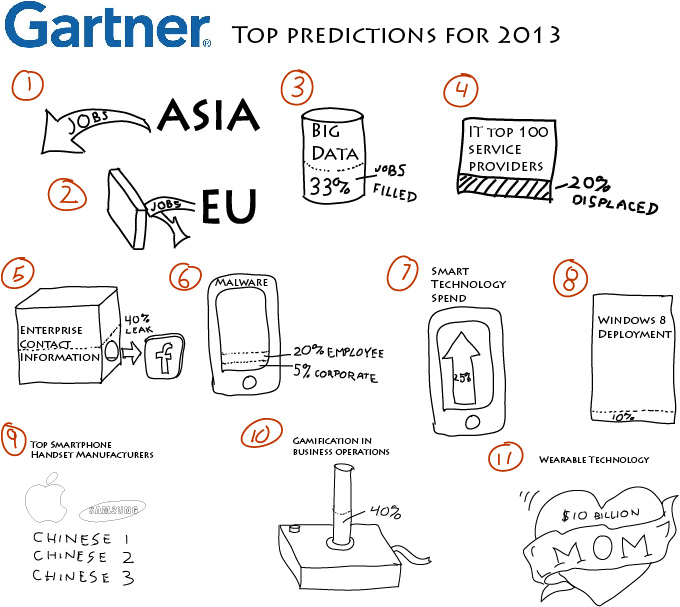
I recently attended a breakfast where analyst firm Gartner shared their 11 top technology predictions for 2013, grouped in four areas of economics, risk, opportunity, and innovation. Since attending the session, I have reviewed the predictions with both the executive in my digital studio and the development team.
Two main sentiments come up in my internal discussions. First was that the predictions were high-level, obvious and safe. While false prophets in this day and age are not literally stoned to death like in Biblical times, Gartner would be very careful not to put themselves in a position to be pelted with rocks from commercial critics.
The second feedback was the extent to which this is relevant to me either strategically for where leaders are taking their company or tactically to the day to day activities. My team looked at me and said “Yes, Chad, but what does this mean to us? Is this the most important thing we can be talking about right now?”
In searching for a response, I come up with a few main outcomes I feel relevant to my company and businesses I work with. I am sure there are more that could be pulled out. Even as I write these, however, I realise the points below could have been stated a decade ago and still apply:
- Service providers, ensure you differentiate to prepare for inevitable threats in local markets (e.g., Asian competition).
- Know how you will maximise the data that results from whatever systems you develop (e.g. “big” data).
- Consider the weakest link for security at all points of your system and ensure you have a solid barrier at your network source (e.g., smartphone malware).
- Update policies to accommodate rapidly changing technologies (e.g., social media information leaks).
- Update your systems now to accommodate the way your customers want to engage with your service (e.g., smartphone technology increase).
- Update your systems when it makes sense; not before, and not years after (e.g., Windows 8 upgrade).
- Create systems people are motivated to use (e.g., “gamification”).
I post the predictions below and some of my supporting thoughts. After your read through, I welcome you to comment on whether the predictions are relevant to your organisation, if they are saying anything that is not immediately obvious, and if there is any practical change you will take as a result of the Gartner prophets.
Economics-related predictions
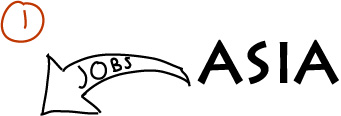
#1 Job creation – Asian-headquartered employment: By 2014, IT hiring in major western markets will come predominantly from Asian-headquartered companies enjoying double-digit growth.
Leading Asian IT companies are growing at a rate of 27%, as compared to leading US-based IT companies growing at a rate of less than 5%. Asian companies will continue to expand through establishing a local presence, hiring local IT employees and western markets. This allows companies to satisfy requirements for hiring “local”, but it will also moderate the cost-leadership strategy of off-shore suppliers.
Unlike manufacturing which requires distribution of physical goods, I see digital provision doing more to progress globalisation and blur national boundaries. This also raises questions around privacy, where your data is stored, and who owns your intellectual property.
Local providers will face similar pressures as experienced by the domestic manufacturing sector: specialise or merge. I see both concern about overseas competition hitting domestic shores and preparing to accommodate the inevitable. The next generation of young people needs to be aware of this trend. My personal case in point: my 18-year old daughter learned Chinese in high school and starts her IT university degree next week.

#2 Job protection – EU protectionism: By 2014 European Union directives will drive legislation to protect jobs, reducing offshoring by 20% through 2016.
Compare and contrast this with prediction #1 above. The recommendation for external companies doing business in the EU is to establish a local footprint in low-cost regions. This is also related to the later prediction of consolidation as mergers focus on both technology and regional specialisation.
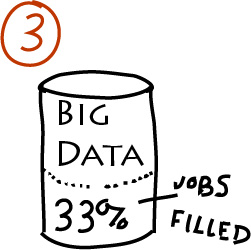
#3 Job fulfillment – Big Data: By 2015, ‘big data demand will reach 4.4 million jobs globally, but only one-third of those jobs will be filled.
Big data is defined by the volume, velocity and variety of the data. The premise here is that advent of “big data” will define new roles in organisations for skill sets that can make sense of the data and apply it to business outcomes. An example of an emerging role was the notion of a “digital anthropologist” as technical skills shift to support business outcomes. Perhaps my social science Master’s degree wasn’t such a bad idea.
I see the notion of “big data” as relative. Facebook dealing with 180 petabytes of data can be a similar challenge to the small business owner trying to manage customer data over a few gigabytes of sales history data spread over four systems. The prediction says 66% of big data jobs will not be filled. I question whether this is not a reflection of what we are already seeing, that companies are only one-third effective in looking at their data now.
Risk-related predictions
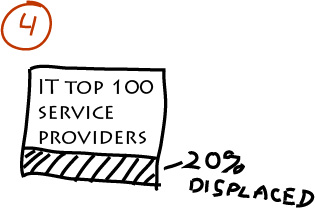
#4 Market consolidation – vendor shift: By 2014, market consolidation displaces up to 20% of the top 100 IT services providers.
The technology landscape changes rapidly, so to say that there will be a 20% shift is not surprising. Vendors need to be continuously on the move to support emerging technologies and assess how collaborations with new players and each other can support business outcomes of their clients. Mobile and cloud technologies have created a land grab for start-ups and specialist players. We saw this in the early days of dot com with the creation of “com-glomerates”, and we will continue to see it for the foreseeable future.
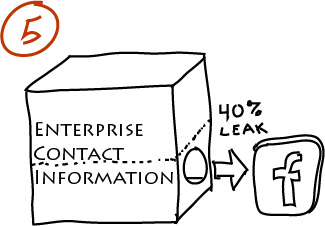
#5 Privacy – Facebook leaks: By 2017, 40% of enterprise contact information will have leaked into Facebook via employees’ increased use of mobile device collaboration applications.
Everyone is talking about bring your own devices (BYOD), but bring your own application (BYOA) may be a bigger topic. The ability for users to log into business-level tools with their personal Facebook account raises new challenges for what need to be constantly changing codes of conduct and policies. The lines blur between the tools and the role, particularly for employees who are increasingly “always on” in the digital space.
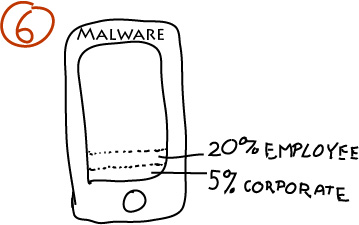
#6 Security – malware on employee devices: Through 2014, employee-owned devices will be compromised by malware at more than double the rate of corporate-owned devices.
The presentation noted that 20% of consumer-grade endpoints are compromised by malware, compared to less than 5% for corporate endpoints. Security is a matter of the weakest link. Applications login through Facebook, track behaviour through Google Analytics, and share through any number of social plug-ins. With so many potential exposure points at the application level, security needs to be maintained at the underlying network.
This is relevant to service providers in that the security question needs to be raised early and considered for all aspects of the application.
Opportunity-related predictions
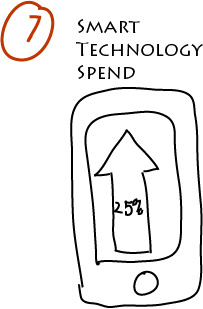
#7 Operational technology – smart devices: Through 2014, software spending resulting from the proliferation of smart operational technology will increase by 25%.
Smart devices facilitate the continued expansion of point of sale (POS) systems into people’s hands and into their living rooms. The prediction also says we will see a greater shift towards license fees based on transactional volumes as compared to once-off purchases. The prediction is safe, in that the 25% increase may be a re-allocation away from other spend areas.
The pendulum swings. Smart devices and bespoke user interfaces fragmented traditional single solution point of sale systems. These will now consolidate as providers acquire or develop solutions that bring engagement with smart interfaces back into a single software solution. These costs will be passed onto clients who make the services available to their customers.

#8 MS Windows Future – Windows 8: 90% of enterprises will bypass broad-scale deployment of Windows 8 until at least 2014.
Given the prevalence of user-owned devices and applications, every organisation will have at least one version of Windows 8. However, the prevalence of software as a service minimises the need for wide-spread change of the organisation’s operating system. IT becomes a cloud broker with a less emphasis on the platform.
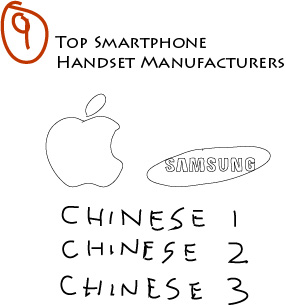
#9 Chinese ascendance – mobile handset vendors: By year end 2014, three of the top five mobile handset vendors will be headquartered in China.
The market will be Apple, Samsung, and three others headquartered in China. Cheap smartphones dominate in terms of volume and Chinese iPhone providers are experiencing 100% growth rates.
The practical relevance to either a service provider or small business may be questioned. However, this comes into play considering the increase in smart device engagement and “anywhere, anytime” expectation of customers with businesses. Specifically, with the decision as to providing solutions developed in custom iPhone or Android applications or providing cross-platform solutions.
Australia is not seeing a great demand for Android applications in proportion to iPhone. What we are seeing is for organisations who do business in China to develop on a common code base and release versions in China that capitalise on the greater popularity in China of the Android platform.
Innovation-related predictions
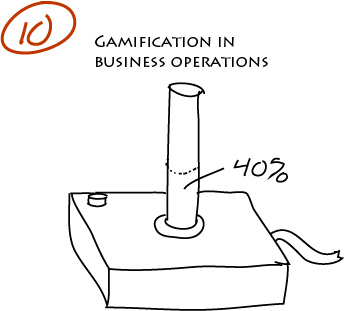
#10 Gamification – business application: By 2015, 40% of Global 1000 organisations will use gamification as the primary mechanism to transform business operations.
Like many, I am critical of the term gamification and I think this to be a bit of a throw-away prediction. But just like the overuse of the term “big data” leads to an important conversation, gamification highlights we may be making systems that are a chore rather than a pleasure to use.
I often consider how we can spend hours motionless staring at a screen moving pixels around with a controller in hand, yet spending 60 seconds completing a form online to fill in our taxes or our timesheets can be excruciating. This applies to both digital as well as human systems we put in place.
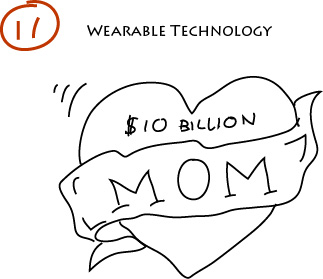
#11 Wearable technology: Wearable smart electronics in shoes, “tattoos” and accessories will emerge as a US$10 billion industry by 2016.
I have a friend in academia who asks how long we will continue to be familiar with a motion of putting a phone to our ear. If we do continue to use the devices, they will be augmented with features such as scanning for biometric data. The two big industries highlighted are fitness and medical, but anything that makes spending money easier will be supported as well.
For those in the business of building or implementing systems, the take-away here is to architect solutions that can accommodate a range of interfaces or inputs. This includes wristbands, implants, clothing and glasses as much as traditional smartphones.
And yes, I do just realise I used the word traditional to describe smartphones. Things change fast, and predictions are often forgotten unless we are reminded of the predictions by the prophets who are proven right when the predictions come true.
I question whether these are predictions or just observations of what is already in play. I would be interested in your opinion as to whether these predictions have value or if there are other trends that may be more relevant to discuss.

It’s always good to keep one’s ear to the ground making these observations or “predictions” important to bear in mind moving forward.